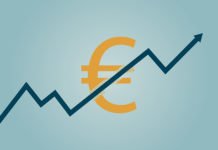Markets
The key events to watch today were the ECB policy decision and important US data. The main conclusion of the latter is that they, once again, underscore the resilience of the world’s largest economy. Quarterly growth in the last three months of 2023 came in at 3.3%, easily beating a 2% estimate. Beneath the headline figure, more strength appears with personal consumption contributing 1.91% to growth. Government consumption came in second (0.56%) and net exports third (adding 0.43%). Goldilocks supporters get exactly what they came for with the price indices showing a bigger deceleration than hoped-for. The GDP deflator decelerated from 3.3% to 1.5% in Q4 (2.2% expected). Core PCE came in at the anticipated 2% (unchanged vs the previous quarter). Durable goods data printed to the soft side of expectations in terms of the headline figure but printed a tad stronger in the core (and more important) readings. Weekly jobless claims rose a bit more than foreseen, to back above 200k. All of the latter data played second fiddle obviously. US yields quickly erased a kneejerk uptick (on the headline GDP outcome) after the market digested the inflation gauges. US rates lose between 4.4 and 5.5 bps across the curve. A May cut is cemented deeper.
The ECB policy decision was no surprise with steady rates and no tweaks to the statement or official guidance whatsoever. Its (December) medium-term inflation outlook has been broadly confirmed by incoming data. The central bank can stay put for the time being with “rates at levels that, maintained for a sufficiently long duration, will make a substantial contribution to this [reaching the 2%] goal.” The recent uptick in CPI was dismissed as energy-related while the underlying trend in core inflation has continued. Lagarde noted how almost all underlying gauges fell further in December in a remark that was picked up as dovish by markets. The ECB chair during the press conference reiterated that the discussion about rate cuts was considered premature. She said she stands by her comments made in the Bloomberg interview, referring to the summer as a broad timing for a first cut. However, she distanced herself from “the conclusions made by others” following that comment. Bloomberg, for one, afterwards reported that a consensus was building for a June cut. Considering Lagarde’s pushback today was not at all as convincing as it was last week, markets took that as another dovish hint. Total easing priced in for 2024 is now 140 bps compared to 129 bps prior to the press conference with chances for an April move rising to >80%. That’s despite Lagarde saying that she’s still waiting on important data which could take months before reaching Frankfurt, the outcome of wage negotiations to mention a critical one. The ECB does see encouraging signs of company profits absorbing the wage push higher. All in all, investors mainly draw some soft conclusions from the meeting. Supported by US spillovers, German yields decline between 2.5 and 8.1 bps. The front end outperforming. European stocks bottom out and even trade in the green (+0.3% for the EuroStoxx50). The euro loses ground against most peers. EUR/USD eases towards 1.086 and is probably lucky the US dollar is losing interest rate support as well.
News & Views
The Norwegian central bank kept its policy rate unchanged at 4.5% today, a level at which it will likely be kept for some time ahead. Both inflation and economic activity have been broadly in line with the projections in the December 2023 Monetary Policy Report. The krone is stronger than expected. If cost inflation remains elevated, or the krone depreciates again, inflation may remain high for longer than previously projected. In that case, the Monetary Policy Committee (MPC) is prepared to raise the policy rate again. If there is a more pronounced slowdown in the Norwegian economy or inflation declines more rapidly, the policy rate may be lowered earlier than envisaged in December. Norwegian markets didn’t respond to the decision. EUR/NOK changes hands around 11.37 with money markets attaching a 70% probability to a rate cut as soon as June.
The Turkish central bank (CBRT) raised its policy rate from 42.50% to 45%. Taking into account the lagged impact of monetary tightening, the MPC assesses that the monetary tightness required to establish the disinflation course is achieved and that this level will be maintained as long as needed. That is until there is a significant decline in the underlying trend of monthly inflation (2.93% M/M and 64.77% Y/Y in December for headline CPI) and until inflation expectations converge to the projected forecast range. The Turkish lira holds steady near record low levels just above EUR/TRY 33.













